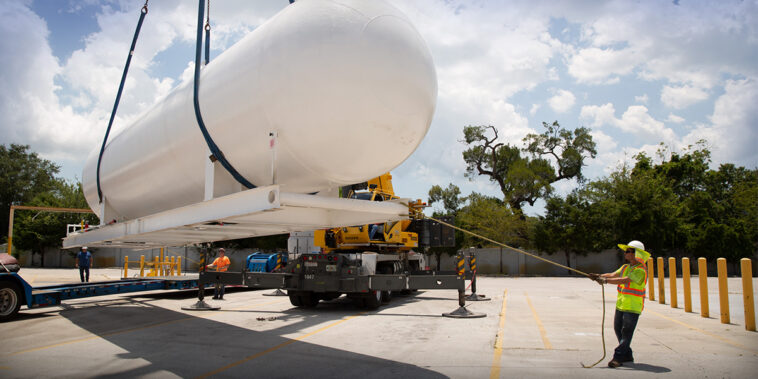A new $1.2 trillion law to improve America’s infrastructure creates an unprecedented opportunity for propane and other low-emission fuels to power on-road and off-road fleets that have historically operated on diesel and gasoline.
The Infrastructure Investment and Jobs Act includes over $9 billion in funding for refueling infrastructure and clean vehicles, including propane, identified in the act as an emerging alternative fuel. Today, about 70,000 on-road vehicles run on propane. Propane autogas reduces more emissions per dollar than any other fuel and is a cost-effective solution compared with electric vehicles.
“The inclusion of propane is a major win for communities across the country, as fleet owners will have multiple alternative fuel options for reducing emissions and transforming their fleets for the better,” says Tucker Perkins, president and CEO of the Propane Education & Research Council. “With propane, fleets can accelerate decarbonization quickly and affordably.”
Propane’s simple, affordable, ready-now equipment ensures energy equity by cutting carbon emissions without the trillions of dollars required to modernize an aging electrical grid and retrofit millions of homes and businesses. The burden for those upgrades would inevitably fall on those who can least afford it. Further, propane produces 43% fewer greenhouse gas emissions versus electricity.
AVAILABLE FUNDING
Propane-fueled vehicles and refueling infrastructure are eligible to compete for the following funding opportunities under the new law:
- $2.5 billion in grants for charging and refueling infrastructure
- $2.5 billion in funding for the Clean School Bus Program
- $1.6 billion in grants for buses and bus facilities
- $2.5 billion in grants for emissions reduction at port facilities
Propane offers significant benefits in the following product categories:
Transit: Operators of medium-duty paratransit vehicles (airport shuttles), city or county regional transit vehicles, and delivery trucks often use propane. For this type of vehicle, propane has the lowest cost of ownership due to low fuel and maintenance costs. Additionally, there is a 97% reduction in NOx and a 10% reduction in CO2 compared with diesel-powered medium-duty vehicles.
Port equipment: Propane helps improve air quality at our nation’s ports while reliably supporting global trade logistics. It fuels resilient, low-NOx generators for backup as well as prime power for cold ironing, charging, and other large industrial applications. Propane-fueled port tractors produce fewer emissions and cost approximately $200,000 less than electric models, meaning ports can afford to replace more of their fleet and achieve carbon reduction goals faster.
Other propane-fueled port equipment includes reach stackers, empty container handlers, and rubber-tired gantry cranes.
Propane dispensers: Propane refueling infrastructure is affordable, scalable, and readily available for the nation’s alternative fuel corridors. Propane-fueled generators even provide for EV recharging.
Funding is expected to become available in January 2022.
Find out more, visit www.propane.com.




